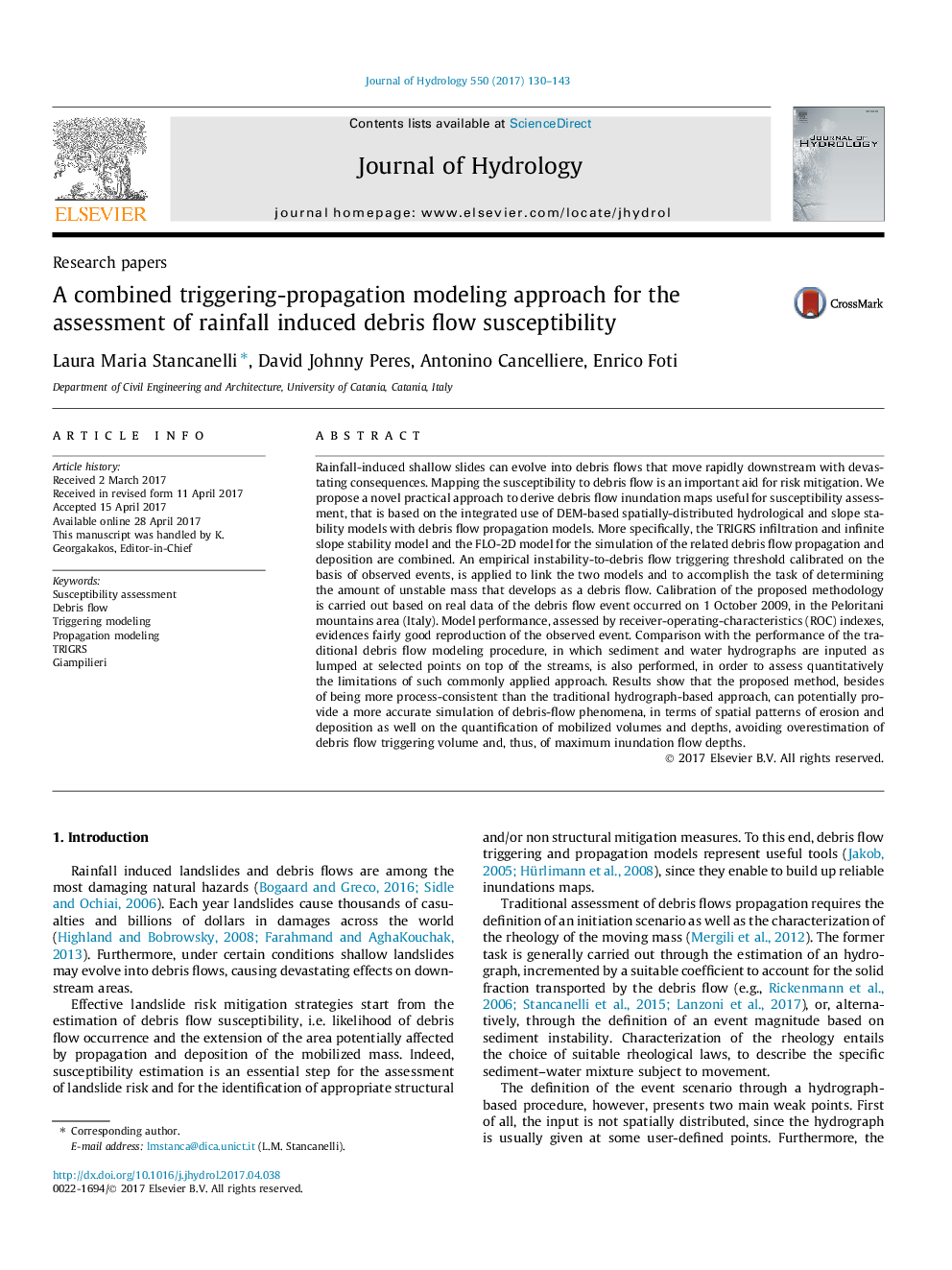| کد مقاله | کد نشریه | سال انتشار | مقاله انگلیسی | نسخه تمام متن |
|---|---|---|---|---|
| 5770745 | 1629904 | 2017 | 14 صفحه PDF | دانلود رایگان |

- An approach for susceptibility assessment of rainfall induced debris flow is proposed.
- Approach is based on combining triggering and propagation models.
- Calibration of the model is based on debris flow field data and ROC analysis.
- The approach is more process-consistent than traditional solid hydrograph-based ones.
- The method allows transferability for predictive susceptibility assessments.
Rainfall-induced shallow slides can evolve into debris flows that move rapidly downstream with devastating consequences. Mapping the susceptibility to debris flow is an important aid for risk mitigation. We propose a novel practical approach to derive debris flow inundation maps useful for susceptibility assessment, that is based on the integrated use of DEM-based spatially-distributed hydrological and slope stability models with debris flow propagation models. More specifically, the TRIGRS infiltration and infinite slope stability model and the FLO-2D model for the simulation of the related debris flow propagation and deposition are combined. An empirical instability-to-debris flow triggering threshold calibrated on the basis of observed events, is applied to link the two models and to accomplish the task of determining the amount of unstable mass that develops as a debris flow. Calibration of the proposed methodology is carried out based on real data of the debris flow event occurred on 1 October 2009, in the Peloritani mountains area (Italy). Model performance, assessed by receiver-operating-characteristics (ROC) indexes, evidences fairly good reproduction of the observed event. Comparison with the performance of the traditional debris flow modeling procedure, in which sediment and water hydrographs are inputed as lumped at selected points on top of the streams, is also performed, in order to assess quantitatively the limitations of such commonly applied approach. Results show that the proposed method, besides of being more process-consistent than the traditional hydrograph-based approach, can potentially provide a more accurate simulation of debris-flow phenomena, in terms of spatial patterns of erosion and deposition as well on the quantification of mobilized volumes and depths, avoiding overestimation of debris flow triggering volume and, thus, of maximum inundation flow depths.
Journal: Journal of Hydrology - Volume 550, July 2017, Pages 130-143